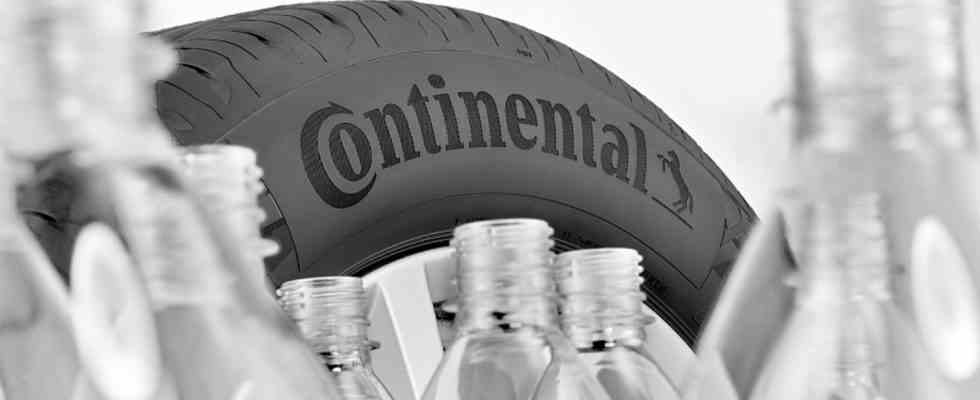Technology: Sustainable tires of the future
Green Gum
Continental uses PET bottles
© press-inform – the press office
Sustainability prevails in the production of car tires. It starts with the materials and ends with the processes. The trick is to resolve the conflict of goals between environmentally friendly resources and crucial properties such as grip and rolling resistance.
Until a few years ago, the tire world was still clear. A car tire was manufactured according to the tried and tested pattern with vulcanization as the central element. The composition of the materials, such as natural rubber or steel, was primarily about generating as much grip and stable running behavior as possible and lasting as long as possible. With electromobility, the specifications of the rubber chefs at Continental, Michelin and Bridgestone have already been supplemented by low rolling resistance. Not always helpful when it comes to traction. A tire that ideally sticks to the asphalt increases rolling resistance. Especially in the wet, the low-friction tires have to show that they come as close as possible to the grip of classic tires.
It was up to the technicians to resolve this conflict of objectives. Now the tire manufacturers are stepping it up a notch. Sustainability is the big maxim that should make the tire industry fit for the future. It’s not just about climate-neutral production, which companies like Michelin or Continental are striving for by 2050. In addition to CO2-neutral production, all materials should also be sustainable by then, i.e. made from recycled or renewable raw materials. It is obvious that the path to eco tires is not completed overnight. The transformation to green rubber will take place little by little. The German Continental tires currently consist of 15 to 20 percent renewable or recycled materials.
There are almost no limits to the inventiveness. It starts with the rubber, of course. Nokian is currently working on synthetic rubber made from birch bark residues and has already won an innovation competition for sustainability. There is enough raw material. Birch bark is a waste product from the pulp, paper and plywood industries. According to the manufacturer Reselo, the forest industry in Finland and Sweden alone produces enough raw material for 200,000 tons of this special rubber. Another variant is rubber made from dandelion.
However, these materials can only partially or completely replace natural rubber, which accounts for between ten and 40 percent of the total weight of a modern tire, if they have identical or at least similar properties. The same applies to silica, which has a significant impact on the tire’s grip, rolling resistance and mileage. Silica made from the ash of rice husks is significantly more energy efficient than traditional materials such as quartz sand. With every automobile tire, the truth is, of course, on the ground. Only a safe tire is a good tire and that means that the tires perform well on dry and wet asphalt, as well as on snow and ice in winter.
Just as tires are made of many different materials, there are just as many options for finding the best mix of sustainable materials. Tire production of the future also includes reclaimed rubber or PET bottles in the form of HMLS polyester yarn. Recycling is another keyword in the tires of the future. This applies to the materials used in shoe soles and artificial turf, such as those used in retreaded tyres, as well as carbon black or steel, which, for example, is produced with hydrogen from renewable energies instead of classic coal.
The sustainability of the tire also includes the transparency and traceability of the materials used. Because all ideas and concepts fizzle out if excess CO2 is blown into the air during transport.

